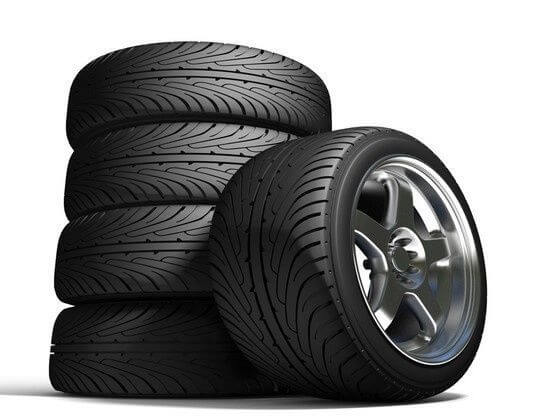Picture yourself driving down a serene, snow-covered road during a chilly winter’s day. While the scenery may be breathtaking, it’s essential not to overlook the health of your car tyres. Just like walking on thin ice, driving on worn-out tyres can be hazardous and compromise your safety on the road. Tyres are the unsung heroes of your vehicle, supporting its weight and ensuring a smooth ride. In this blog post, we’ll explore seven critical indicators that signify it’s time to replace your car tyres and keep your ride on solid ground.
Tread Depth – A Tire’s Lifeline:
Imagine your car tyres as brave explorers venturing on a treacherous journey through the rough terrains of life. As they tread on various surfaces, the tread depth slowly wears down. The tread depth directly affects your tyre’s ability to maintain grip and traction on the road. A simple yet effective way to check your tyre’s tread depth is by performing the “Penny Test”:
- Take a penny and insert it into the tread grooves with Lincoln’s head facing down.
- If you can see the top of Lincoln’s head entirely, it’s a clear sign that your tyre’s tread is dangerously shallow, and it’s time for a replacement.
- On the other hand, if Lincoln’s head is partially covered by the tread, your tyres still have some life left.
Uneven Wear – A Symptom of Alignment Issues:
Imagine your tyres dancing to the rhythm of life as you cruise along the highways. However, sometimes, life can throw a curveball, causing your tyres to wear unevenly. If you notice irregular wear patterns on your tyres, it could indicate alignment issues or other mechanical problems with your vehicle. Signs of uneven wear include:
- Excessive wear on one side of the tyre.
- Cupping or scalloped patterns on the tread.
- Feathering, where the edges of the tread blocks appear rounded.
- Addressing alignment issues promptly can save you from the burden of early tyre replacements and ensure a smoother, safer drive.
Age Matters – Don’t Ignore the Clock:
Just like us, tyres have a lifespan too. Regardless of their appearance, tyres age over time and might not perform optimally after a certain period. The rubber compounds in tyres gradually degrade, making them more susceptible to punctures and blowouts. Experts recommend replacing tyres every 6 to 10 years, depending on factors like climate and driving conditions. Keep an eye on the manufacturing date stamped on your tyres, and if they’ve crossed the recommended age limit, it’s time to bid them farewell.
Cracks and Bulges – Signs of Trouble:
Imagine your tyres as the guardians of your vehicle, shielding it from the harsh realities of the road. However, even the mightiest guardians can fall. Cracks on the sidewall or bulges on the tyre surface are warning signs that your tyres are vulnerable and compromised. These issues can lead to sudden blowouts, putting your safety at risk. So, if you notice any cracks or bulges on your tyres, don’t hesitate to replace them immediately.
Poor Fuel Efficiency – A Sneaky Indicator:
Imagine your car as an efficient machine, using fuel judiciously as it traverses the roads. However, if you notice a sudden drop in fuel efficiency, your tyres might be silently sipping away that extra gas. Underinflated or worn-out tyres can increase rolling resistance, leading to decreased fuel economy. Regularly check your tyre pressure and replace them when needed to ensure optimal fuel efficiency and save some bucks at the pump.
Aquaplaning – Losing Grip on Wet Roads:
Picture your tyres as acrobats, effortlessly balancing on the high wire of dry roads. However, when the rains pour down, the equation changes, and aquaplaning becomes a real threat. Aquaplaning occurs when water accumulates between the road surface and the tyre, leading to a loss of traction. Worn-out tyres with shallow tread depth are more susceptible to aquaplaning, jeopardizing your control over the vehicle. Replacing your tyres with ones that have adequate tread depth can significantly reduce the risk of aquaplaning and help you stay in control during wet weather conditions.
Handling and Braking Performance – A Matter of Life and Death:
Imagine your car tyres as the loyal soldiers of your vehicle, ensuring a smooth ride and responsive handling. However, as they age and wear out, their ability to grip the road diminishes, affecting your vehicle’s braking performance and handling. If you notice a decrease in braking responsiveness or difficulty maintaining control during turns, it’s time to swap out those worn-out tyres for fresh, reliable ones. Your safety and that of others on the road depend on it.
Conclusion:
Just like walking on thin ice, driving on worn-out tyres can be a risky gamble. Monitoring the indicators mentioned in this blog post can help you identify when it’s time to replace your car tyres. Regular maintenance and timely replacements ensure that your vehicle remains steady on the road, allowing you to enjoy your journeys with peace of mind. Remember, your car tyres are the unsung heroes, and it’s our responsibility to keep them in their best shape to support us on all our adventures on the open road. Stay safe and drive smart!














